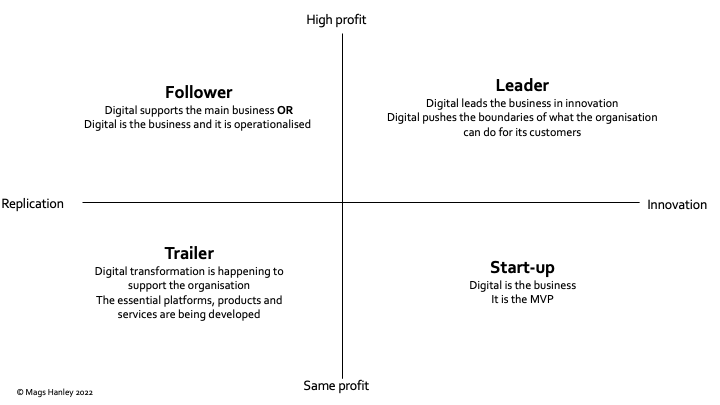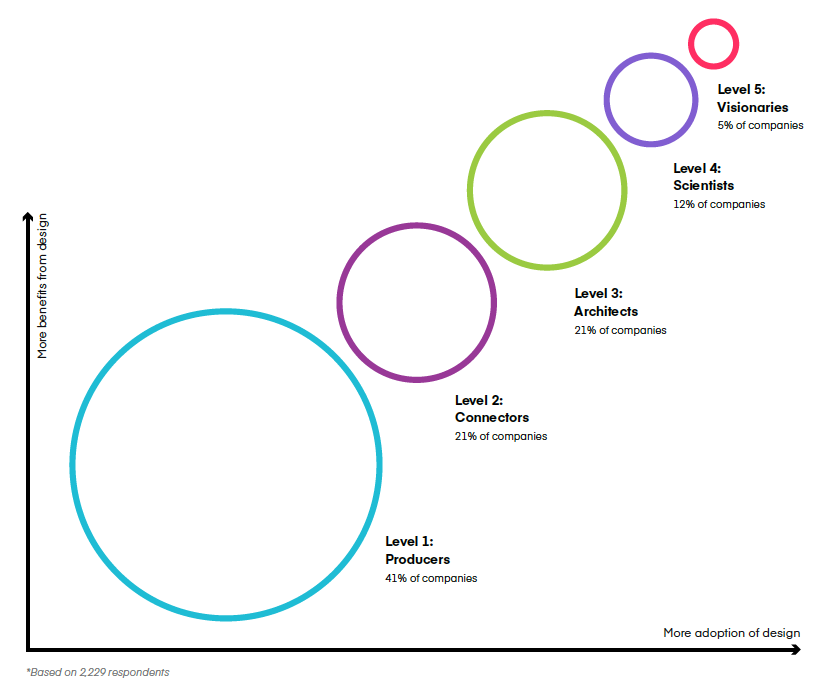There is a large demand at the moment for Senior UX Designers — well, there has always been a huge demand.
But at the moment in Australia — with the rapid digital transformation of many organisations during COVID — the need to improve on the ‘first draft’ has now led to increased demand for them.
When I work with Design Leaders, the first job description they create is the Senior Designer — one who has the skills to do the work and can be placed in a squad, being effective straight away. It’s a lot of pressure on the senior designer.
These leaders are under pressure to get bums on seats, while they are developing trust in the practice, snowed under with recruitment, or are working on more strategic initiatives. They see that senior designers will meet the immediate need.
But are seniors truly the right hires for teams?
I have four inputs to consider when hiring for a team:
- Organisational digital maturity
- Design maturity
- The role design is going to play in each project
- Current vs. future positioning of the team
Organisational Digital Maturity
There are four different groups in my digital maturity model:
- Followers: Digital is either the mature business model or a mature part of the organisation
- Leaders: Digital leads the business in defining the customers and new
- Start-ups: Digital is the product and the MVP
- Trailers: They are still in digital transformation or the essential platforms and products are being developed
These categories can apply to either the whole organisation or could apply on a department level in larger companies. For Design Leaders, it is understanding the environment they are operating in.

Design Maturity
There are two popular design maturity models:
I prefer the InVision Design Maturity Model because it focuses on the organisational maturity, not just the maturity of the design activities.

© InVision 2019
No matter what model Design Leaders use, understanding the level of maturity helps us benchmark the capabilities of our team and how we are seen in the organisation.
For example, Level 1 organisations find it hard to jump directly from doing UI work in squads to contributing to the business strategy as Level 5. Design Leaders need to build trust in delivery and a design base, to build to that level of influence where strategic work can happen with Senior Leadership.
I’ve spent the majority of my career in Trailer organisations, at a Level 1-2 Design Maturity, mostly due to my expertise in CMS and E-Commerce platforms. The projects always take longer than expected (2 years on average), the design team hates them because they’re ‘not creative’ and become a delivery slog.
BUT if the design team mucks in and gets the production work done, develops design systems, and ensures the product works for both internal and external customers, they earn a reputation for delivery and develop trust that moves them up the maturity scale. They can then get in the room and shape the products rather than just do the UI.
The Roles of Design in Projects
As Design Leaders, we also have to judiciously choose what projects we are going to lead and contribute to; even the largest design teams in the world must decide on where to focus their skills.
There are four roles Design can take:
- Leading: Owning the scope of the work for either the project or workstream. The focus is on leading the project planning, scoping, and setting the direction
- Contributing: Contributing design’s expertise to the project. The focus is on executing to a high level of competency
- Consulted: Providing support to other teams doing design work. The focus is on reviewing and critiquing work with ‘office hours’.
- Not involved: Not in the project. There are certain projects where design chooses to not work on
Each Design Leader chooses the combination of projects to be involved and the roles the team will take based on the number of people they have and the digital maturity.
Current vs. Future Positioning of the Team
Lastly, Design Leaders want to think about the current needs vs. where they would like the team to be in 6 months to 2 years. You are hiring to a plan, adjusting as you go as different needs appear, but having a north star to head towards. Maybe the organisation is at Level 3 and the aim is for Level 5 within 2 years. The plan would be to continue to hire at all design levels, but with a particular eye-out for Designers with a strategic bent who could work well with senior leadership.
Who to hire?
Once you have this information in place, now is the time to make decisions.
A common example is a Trailer organisation with Level 1 Design Maturity. In this case, Senior designers ARE the best option; a tight team with exceptional skills, knowing how to work with each other and can build the reputation of design within the company.
Start-ups with Level 1 Design Maturity need a different type of person — the Entrepreneurial Designer; a person who will work collaboratively with the Engineering and Product. They are creative, not worrying about the correct process showing that Design focuses on developing the Minimal Viable Product (MVP).
If you are in a Leader organisation and at Level 4 Design maturity, you will be hiring for two different levels; strategic designers and senior leadership. Strategic designers know how to work with senior leadership to bring deep research results.
Finally, if you are in a Follower organisation and at Level 3 Design Maturity, you are hiring across the board and should be bringing in junior and mid-weight designers, who under the guidance of senior and lead designers will do the majority of the work in squads.
Building a team and hiring the right people is always a struggle, but by doing the analysis of the Digital and Design maturity, understanding what your team will actually do on the ground and where you want to go next, you can make a plan that will include but not be limited to Senior Designers.
Looking for work or wanting to hire in UX, CX and Service Design? Get in touch with our Aquent Australia team.
Let’s chat.
If you want to know more about areas where Designers can make a strategic difference in business, you can buy the book Career Architecture at https://www.magshanley.com/career-architecture-book.
© Mags Hanley
Latest.

Temp-to-perm is the best way to hire today.
Hiring Insights

How to keep top talent: Strategies for successful onboarding
Hiring Insights, Ask Aquent, Training Resources

AI and the job search: What’s changed and how to come out on top
Technology, Job Seeker, Industry Trends




